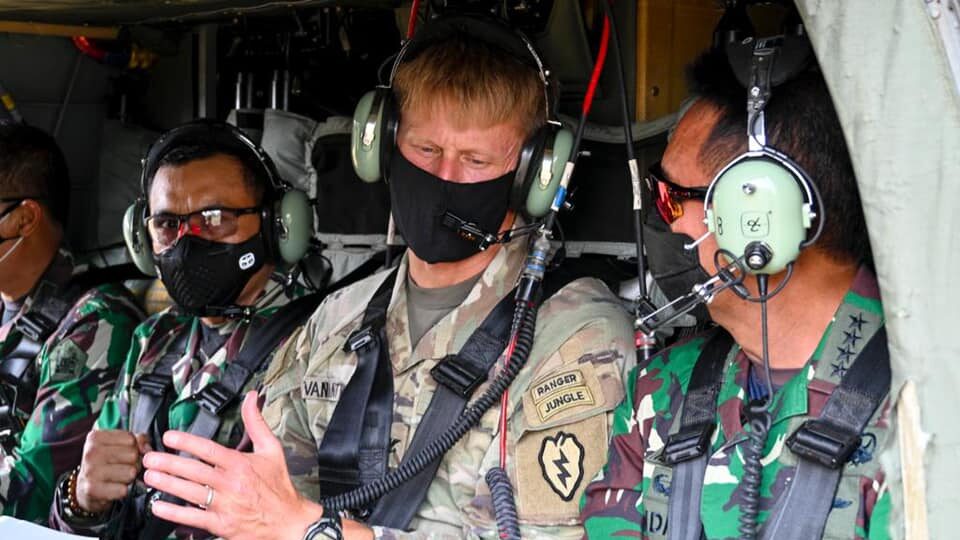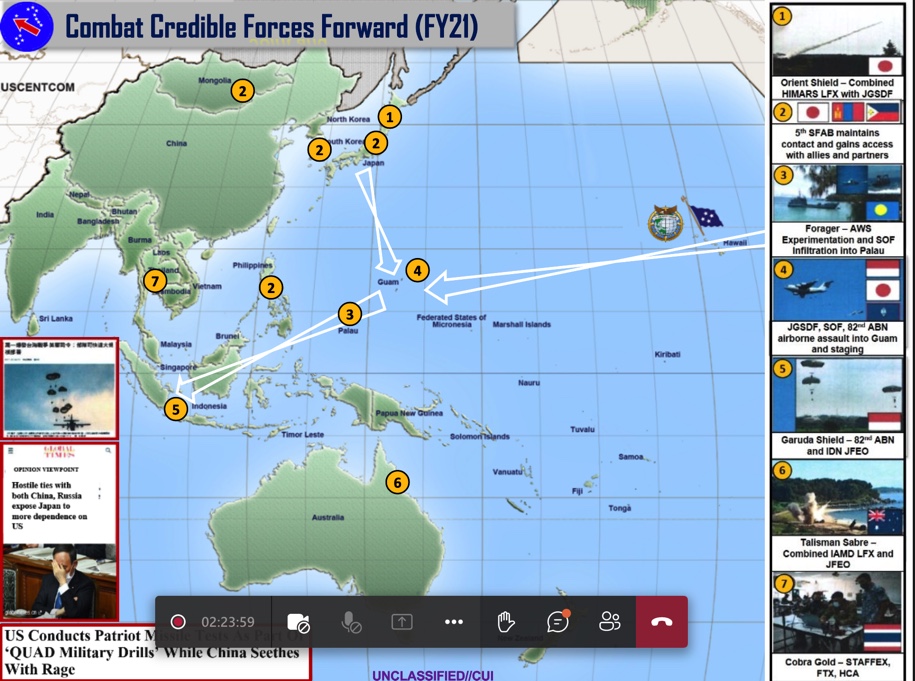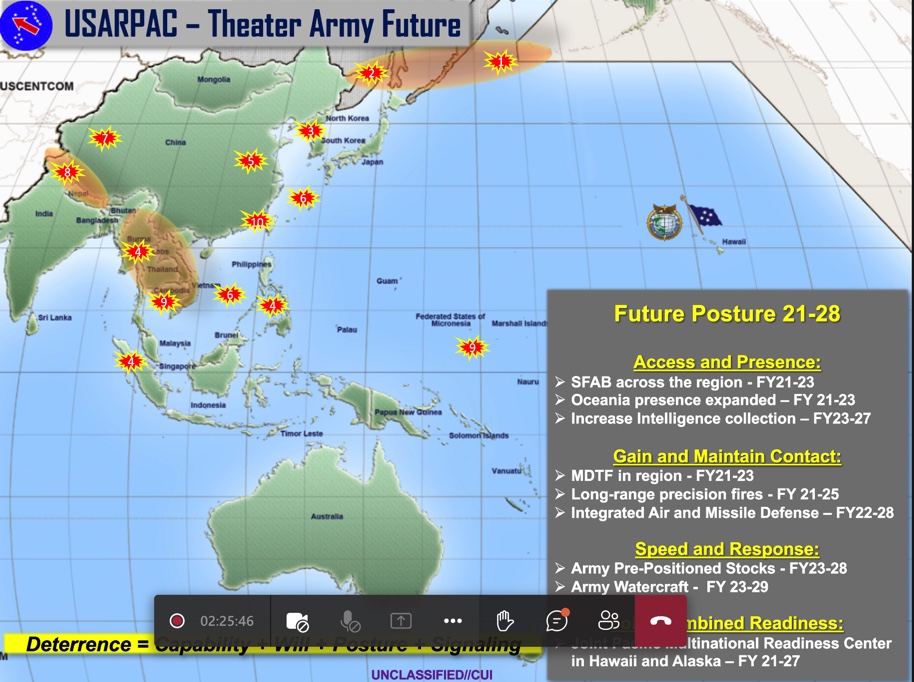
US Army Ranger with Indonesian troops during Garuda Shield 2021. Credit: Garuda Shield Facebook page.
WASHINGTON: As the Pentagon pivots its focus to the Pacific, the Army — worried for years that the Navy and Marines will eat its budget and cachet if Asia becomes the primary theater of competition — is eager to remind members of Congress and senior Defense Department officials that they are central to America’s ability to project power of all kinds in the Pacific.
Despite a public perception that the Pacific is all about ships, Army leadership is quick to note that it has more than 100,000 soldiers in the region and has the majority of Indo-PACOM’s personnel in Hawaii.
“I often remind people that Hawaii is actually an Army town because 51% of the active duty forces in Hawaii are actually in the Army,” the head of US Army Pacific, Gen. Charles Flynn noted last week during a speech to the Landpower in the Pacific conference at West Point’s Modern War Institute.
RELATED: Gen. Murray Says Army’s Modernization Push Requires ‘Persistence’
The service, Flynn said, “provides capabilities to the Joint Force that only the Army provides,” among them sustainment, signal, cyber, contracting, logistics and engineering.
It also provides many of the special operators in the region who help train and assist partners and allies, a key part of any plan to counter Chinese influence across Asia. And the fact the Army has so many troops stationed across the Pacific and in South Korea, he noted, increases “access, persistence, persistent presence and interoperability with our allies and partners.”
He pointed in particular to Army participation in a host of exercises with allies and partners across the Pacific.

“I point all of this out to you because of the impact that it had on our adversary, China,” he told the conference.
Another participant at the conference — whose name cannot be used as the discussion occurred under the Chatham House Rule — bolstered this view, noting that a late 20th century Navy strategist once said “the most important determinant is the man on the ground with gun.”
And the closer US troops are to the enemy the more likely both sides are to understand each other’s intentions and capabilities.
“Well, for the entirety of the Cold War, the US Army, the US military was well inside the [equivalent of China’s] first island chain, right up on the German border. That was important because it was a demonstration of strategic commitment. It was important because you were right up in close, and it means you had to actually talk with the competitor,” the person said, clearly drawing parallels to the US-China balance today.
 “You couldn’t separate yourself, and I think those two reasons alone are really good reasons for countries like the US — but not just the US — to be deployed forward, have forward presence as a signal of commitment to other democracies but also to remain engaged with this great competitor,” the speaker continued. “Because it’s not all about competition; there’s going to be cooperation there as well. And there need to be standing mechanisms for that to take place.”
“You couldn’t separate yourself, and I think those two reasons alone are really good reasons for countries like the US — but not just the US — to be deployed forward, have forward presence as a signal of commitment to other democracies but also to remain engaged with this great competitor,” the speaker continued. “Because it’s not all about competition; there’s going to be cooperation there as well. And there need to be standing mechanisms for that to take place.”
But all these ideas are underlain by one fundamental truth, argued Maj. Gen. Brad Gericke, the Army’s director for strategy, plans and policy.
“I would argue that the land domain is the essential domain. Is it enabling? Yes, but it is decisive,” he told the conference. “The point is, that it is Asia that is the prize. We call it the Pacific, but Asia is the prize. And that’s where power, that’s where economic, military, social informational power is going to primarily emanate from over the next century.”
Of course, there are some realistic challenges for the Army when operating at a distance. The best line of the conference went to Gericke, who had to wait quite a while to speak because of audio problems. “I’m gonna use this laptop, I do not know what happened. We use this all the time, I apologize. But this is a classic case of the challenges of multi domain, integrated warfare right here.”






















